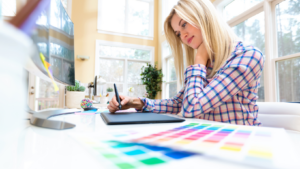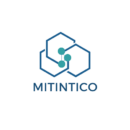Digital design projects represent the cornerstone of modern creative expression in our tech-driven world. From stunning website interfaces to captivating social media graphics these projects blend artistic vision with technical expertise to create meaningful digital experiences.
Today’s designers face an ever-evolving landscape of tools technologies and platforms that shape how they bring their ideas to life. Whether it’s crafting mobile applications developing brand identities or creating interactive installations digital design projects demand a unique combination of creativity problem-solving skills and technical knowledge. As businesses continue to expand their digital presence the demand for innovative and user-centered design solutions continues to grow exponentially.
Digital Design Projects
 Digital design projects involve creating visual content using digital tools to accomplish specific communication or functional objectives. These projects combine artistic elements with technical expertise to deliver engaging digital experiences across various platforms.
Digital design projects involve creating visual content using digital tools to accomplish specific communication or functional objectives. These projects combine artistic elements with technical expertise to deliver engaging digital experiences across various platforms.
- Visual Hierarchy establishes the order of importance through size, color, contrast & spacing
- Typography incorporates font selection, text layouts & readability optimization for screens
- Color Theory applies strategic color combinations to evoke emotions & enhance brand recognition
- User Interface (UI) creates intuitive navigation patterns & interactive elements
- Responsive Design ensures optimal display across multiple devices & screen sizes
- Digital Assets includes vector graphics, raster images & animation components
- Website Design creating responsive layouts, landing pages & e-commerce platforms
- Mobile Applications developing user interfaces for iOS & Android devices
- Digital Marketing Materials producing social media graphics, email templates & online ads
- Brand Identity Systems designing logos, style guides & digital brand assets
- Interactive Experiences building user interfaces for kiosks & digital installations
- Motion Graphics creating animated content for websites, presentations & video platforms
- Digital Publications developing e-books, digital magazines & interactive documents
- 3D Modeling producing product visualizations & architectural renderings
| Project Type | Average Timeline | Common Deliverables |
|---|---|---|
| Website Design | 4-12 weeks | Wireframes, UI Kit, Responsive Layouts |
| Mobile Apps | 8-16 weeks | User Flows, Screen Designs, Prototypes |
| Brand Identity | 6-8 weeks | Logo Files, Style Guide, Asset Library |
| Motion Graphics | 2-6 weeks | Storyboards, Animations, Video Files |
Essential Tools for Digital Design
Digital design projects require specific tools to transform creative concepts into polished final products. The combination of professional software applications and reliable hardware forms the foundation of modern digital design workflows.
Industry-Standard Software
Adobe Creative Cloud dominates the digital design landscape with essential applications:
- Photoshop for image editing, photo manipulation & digital painting
- Illustrator for vector graphics, logos & illustrations
- XD for UI/UX design, prototyping & wireframing
- InDesign for digital publications & layout design
- After Effects for motion graphics & animation
Alternative design tools include:
- Figma for collaborative interface design
- Sketch for macOS-based UI/UX design
- Affinity Designer for vector & raster artwork
- Cinema 4D for 3D modeling & visualization
- Blender for 3D graphics & animation
Hardware Requirements
Essential hardware specifications for digital design include:
| Component | Minimum Specification | Recommended Specification |
|---|---|---|
| Processor | Intel i5/AMD Ryzen 5 | Intel i7/AMD Ryzen 7 |
| RAM | 16GB | 32GB |
| Storage | 512GB SSD | 1TB SSD |
| Graphics | 4GB VRAM | 8GB VRAM |
| Display | 1920×1080 resolution | 4K resolution |
- Graphics tablet for digital illustration
- Color-accurate monitor for precise design work
- External storage for project backups
- High-performance mouse for precise control
- Secondary display for expanded workspace
Planning Your Digital Design Project
 Effective digital design projects start with strategic planning that aligns creative vision with practical execution. The planning phase establishes clear parameters for success while minimizing potential roadblocks. Project goals define measurable outcomes for digital design initiatives through specific metrics. Key project goals include:
Effective digital design projects start with strategic planning that aligns creative vision with practical execution. The planning phase establishes clear parameters for success while minimizing potential roadblocks. Project goals define measurable outcomes for digital design initiatives through specific metrics. Key project goals include:
- Increase user engagement by targeting specific interaction rates
- Generate leads through optimized conversion points
- Enhance brand recognition via consistent visual elements
- Improve user experience based on quantifiable metrics
- Meet accessibility standards for diverse user groups
- Optimize loading speeds across different devices
- Achieve cross-platform compatibility requirements
- Project scope with defined deliverables
- Target audience demographics data
- Technical specifications for platforms
- Brand guidelines reference materials
- Timeline milestones deadlines
- Budget allocation breakdown
- Stakeholder roles responsibilities
- Success metrics KPIs
- Content requirements assets
- Competitive analysis insights
| Brief Component | Description | Timeline |
|---|---|---|
| Project Overview | Core objectives scope | Week 1 |
| Technical Requirements | Platform specifications | Week 1-2 |
| Visual Direction | Style references mood boards | Week 2 |
| Content Strategy | Asset requirements planning | Week 2-3 |
| Timeline Planning | Milestone scheduling | Week 3 |
Best Practices for Digital Design
Digital design best practices establish essential guidelines for creating effective visual solutions that meet project objectives. These practices enhance workflow efficiency while maintaining consistent quality across deliverables.
Design Principles to Follow
- Create visual hierarchy using size contrast spacing to guide users’ attention through content
- Implement a consistent color palette with 3-5 primary colors plus complementary accent colors
- Design responsive layouts that adapt to multiple screen sizes (320px-1920px width)
- Maintain whitespace ratios of 20-40% in layouts to improve readability
- Apply a maximum of 2-3 typeface families with clear size relationships (16px body text 24px headings)
- Use grid systems with 8px or 12px baseline measurements for alignment
- Optimize image files to load within 3 seconds while maintaining quality
- Create components with consistent padding spacing (8px 16px 24px 32px)
- Design interactive elements with minimum touch targets of 44×44 pixels
- Include appropriate contrast ratios (4.5:1 for text 3:1 for UI elements)
- Document feedback in centralized platforms like Figma InVision or Zeplin
- Schedule feedback sessions at specific project milestones (wireframes visual designs prototypes)
- Request specific actionable feedback rather than general comments
- Establish feedback deadlines (24-48 hours) to maintain project timelines
- Create annotation systems to track implementation of changes
- Present 2-3 design options with clear rationales for decisions
- Set up version control systems to track design iterations
- Address feedback in order of priority (critical functional visual refinements)
- Provide context for design decisions based on user research data
- Create feedback templates with sections for layout typography color interactions
Portfolio-Worthy Project Examples
Digital design portfolios showcase innovative solutions across diverse project categories, demonstrating technical proficiency and creative problem-solving abilities.
Web Design Projects
Professional web design portfolios feature responsive e-commerce platforms, interactive landing pages, and dynamic content management systems. Notable examples include:
- E-commerce redesigns that increased conversion rates by 35% through improved checkout flows and product filtering
- Corporate websites incorporating parallax scrolling animations and custom micro-interactions
- Educational platforms with adaptive learning interfaces and progress tracking dashboards
- Portfolio websites showcasing interactive galleries with advanced filtering capabilities
- Blog platforms optimized for content discovery and social sharing
| Project Type | Timeline | Key Metrics |
|---|---|---|
| E-commerce Platform | 12-16 weeks | 35% conversion increase |
| Corporate Website | 8-12 weeks | 45% bounce rate reduction |
| Educational Portal | 16-20 weeks | 80% user engagement rate |
- Product launch videos featuring 3D product demonstrations and kinetic typography
- Explainer animations simplifying complex processes into 60-90 second narratives
- Social media motion graphics optimized for platform-specific aspect ratios
- Brand identity animations showcasing logo transitions and dynamic elements
- Interactive infographics combining data visualization with animated elements
| Project Type | Duration | Format |
|---|---|---|
| Product Launch Video | 45-60 seconds | 4K resolution |
| Explainer Animation | 60-90 seconds | 1080p HD |
| Social Media Stories | 15-30 seconds | 9:16 vertical |
Managing Digital Design Workflows
Digital design workflows encompass structured processes that streamline project execution from conception to delivery. These workflows integrate timeline management strategies collaboration tools to maintain efficiency across design teams.
Project Timeline Management
Project timeline management in digital design relies on specific methodologies to track progress effectively:
-
Sprint Planning
- 1-2 week design sprints with defined deliverables
- Daily standup meetings lasting 15 minutes
- Task prioritization using story points
-
Milestone Tracking
- Design concept approval: Days 1-5
- Initial mockups: Days 6-10
- Client feedback integration: Days 11-15
- Final asset delivery: Days 16-20
| Project Phase | Duration | Key Deliverables |
|---|---|---|
| Discovery | 1-2 weeks | Research reports user personas |
| Design | 2-4 weeks | Wireframes mockups prototypes |
| Development | 3-6 weeks | Working versions testing results |
| Launch | 1 week | Final files documentation |
Collaboration Tools
Digital design teams utilize specialized collaboration platforms to maintain seamless communication:
-
Design Collaboration
- Figma: Real-time design editing sharing
- InVision: Prototype review annotation
- Zeplin: Design hand-off specifications
- Asana: Task assignment tracking
- Trello: Kanban board organization
| Tool Category | Primary Function | Key Features |
|---|---|---|
| Design | Asset Creation | Version control commenting live preview |
| Communication | Team Coordination | Chat channels file sharing video calls |
| Documentation | Knowledge Base | Templates guidelines asset libraries |
Digital design projects represent a dynamic intersection of creativity technology and strategic thinking. Success in this field demands a careful balance of artistic vision technical expertise and practical implementation. Modern designers must stay adaptable embracing new tools and methodologies while maintaining focus on user-centered solutions.
As digital landscapes continue to evolve designers who master both creative and technical aspects while following structured workflows will deliver the most impactful results. The future of digital design lies in creating seamless experiences that engage users and drive measurable outcomes for businesses across all platforms.

